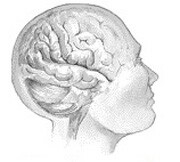- Skip Storing This Everyday Product in the Fridge Door
- Green Tea + B3 Pairing May Boost Brain Health
- Navigating Your Midlife Crisis: Embracing New Possibilities
- City Raccoons Showing Signs of Domestication
- Mapping the Exposome: Science Broadens Focus to Environmental Disease Triggers
- One Week Less on Social Media Linked to Better Mental Health
- Your Brain Changes in Stages as You Age, Study Finds
- Some Suicide Victims Show No Typical Warning Signs, Study Finds
- ByHeart Formula Faces Lawsuits After Babies Sickened With Botulism
- Switch to Vegan Diet Could Cut Your Greenhouse Gas Emissions in Half
2 Cases Suggest Stem Cell Transplant Might Ease ‘Stiff Person’ Syndrome


Two women with a rare disorder called stiff person syndrome recovered after receiving transplants of their own stem cells, a study shows.
Stiff person syndrome is rare neurological disease that causes stiffness of the skeletal muscles and painful muscle spasms. In severe cases, the disorder makes it difficult to move or walk.
Both of the women were treated in Canada by a team led by Dr. Sheilagh Sanders of the University of Ottawa.
Stem cell transplantation using a patient’s own cells has been used successfully in patients with autoimmune diseases such as multiple sclerosis and scleroderma, the team noted. The treatment involves eliminating diseased immune cells and then regenerating the immune system with a person’s own stem cells.
One of the women described in the new report began developing stiff person syndrome in 2005 when she was 48, the researchers said. She began suffering from progressively stiffer legs, overactive reflexes and frequent falling. The woman also, “walked with an abnormal ‘tin soldier’ gait,” the team said.
Despite the use of medication, her condition got so bad that by late 2008 she was forced to quit work and had become “socially withdrawn.”
Hoping to help, Sanders and her colleagues treated the woman in 2009 with transplanted stem cells taken from the patient’s own body.
One month after the procedure, the patient no longer had symptoms and six months after the transplant she had returned to work and was playing sports.
Nearly five years later, the woman is still symptom-free, the team said.
The other woman was diagnosed with stiff person syndrome in 2008 at age 30, and had frequent spasms triggered by cold weather or stress. In the year prior to her stem cell transplant, she “made 47 emergency medical services calls with subsequent hospital visits and had required intensive care unit admission,” Sanders’ team said.
The woman also became too frightened of being alone during an attack and was forced to quit her job and move back home with her parents.
However, she underwent the same type of stem cell transplant in 2011 and has since returned to work and all her prior activities. She has been symptom-free for more than a year, according to the study published online Aug. 25 in the journal JAMA Neurology.
“Both patients remain in remission without ongoing [immune-suppressing] medication,” the researchers added.
While more study in larger numbers of patients is needed, the Canadian team says this is the first report to document long-term and complete remission of stiff person syndrome after this type of stem cell transplantation.
More information
The U.S. National Institute of Neurological Disorders and Stroke has more about stiff person syndrome.
Source: HealthDay
Copyright © 2025 HealthDay. All rights reserved.










